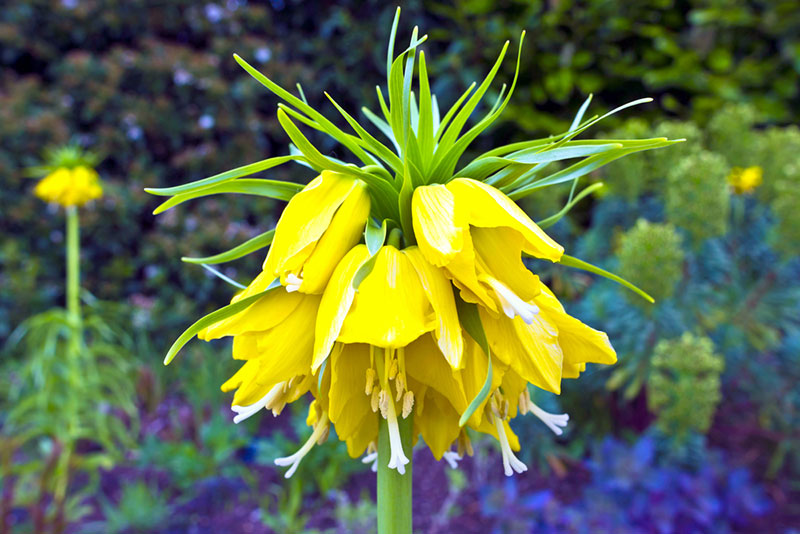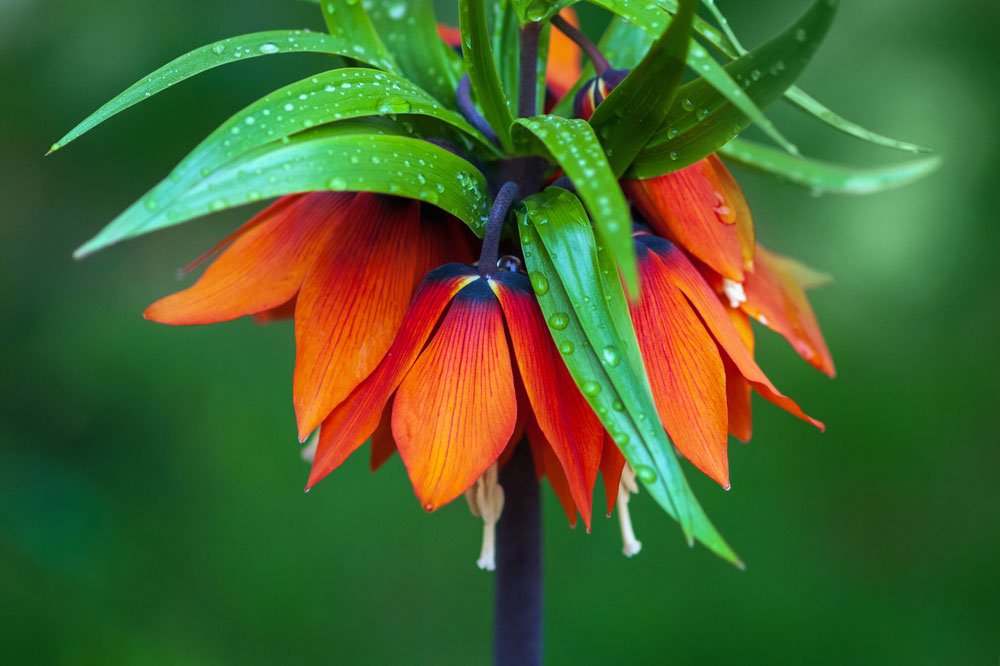
Fritillaria is a genus of perennial bulbs from the lily family. These dramatic flowers bloom in the spring and last for weeks. The upright flower stalk is topped with nodding, lily-like blooms that resemble an umbrella. Colors range from yellow and cream to dramatic red, purple, and orange, with many two-tone varieties in between.
There are three common fritillaria species in home gardens. While each has unique attributes, they can all be treated the same.
- Fritillaria meleagris (snake’s head fritillaria) grows to 15 inches tall and has checkered flowers. It prefers a little more shade than other varieties.
- Fritillaria michailovskyi (Michael’s flower) is smaller, with grasslike foliage that reaches heights of 8 inches. The flowers are maroon with yellow edging.
- Fritillaria imperalis (Crown Imperials) bloom atop a slender stem with a cluster of bell-like flowers amid a spikey knot. They reach heights of 24 to 36 inches and produce yellow, cream, or red flowers.
>> Here are 10 Different varieties of Fritillaria
| Botanical Name: | Fritillaria spp. |
| Common Name(s): | Guinea Hen Flowers, Michaels Flower, Checkered Lily, Persian Lily |
| Plant Type: | Perennial bulb |
| Mature Size: | 8 to 36 inches |
| Sun Exposure: | Full Sun/Partial Shade |
| Water Needs: | medium |
| Soil Type: | Average well-drained |
| Soil pH: | 6.0 to 7.0 |
| Bloom Time: | Mid-Spring |
| Maintenance: | Low |
| Flower Color: | yellow, green, cream, plum, orange, red, two-tone |
| Hardiness Zones: | 4-8 |
| Toxicity: | all parts toxic |
Light
Most varieties of fritillaria prefer full sun to light shade, but some, like Fritillaria meleagris, do best in dappled light. They do well planted under deciduous trees or shrubs that allow sunlight to reach them in the spring.
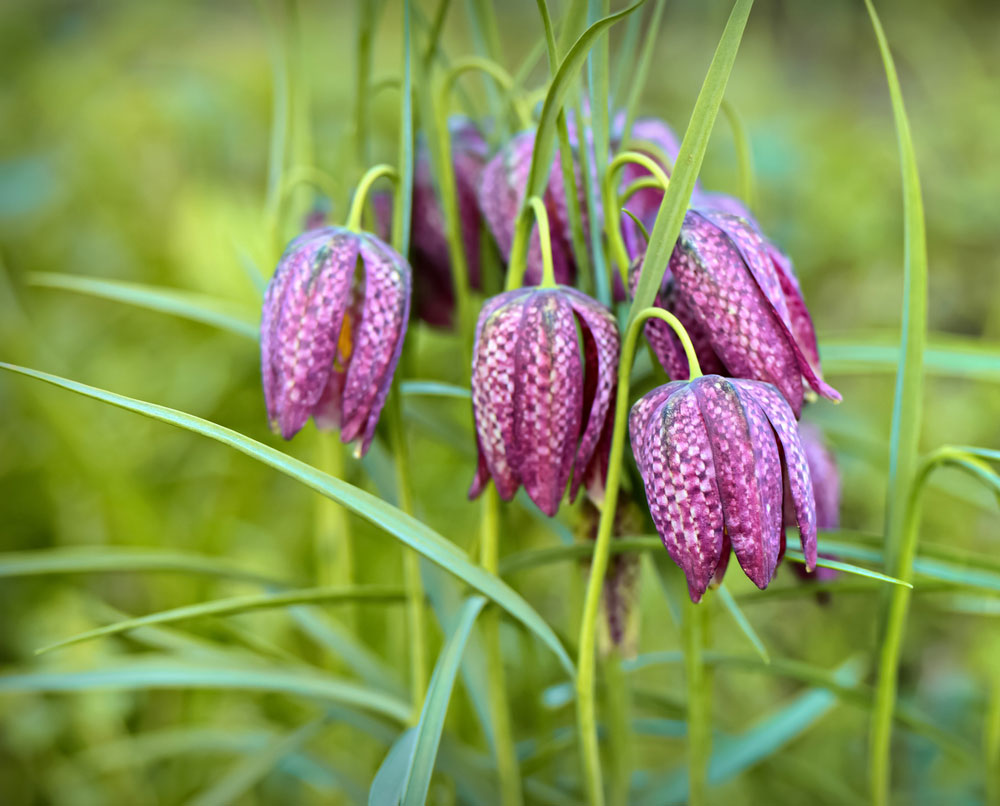
Water
Fritillarias don’t typically need watering in the spring when they bloom, as the soil is already moist from snow and ice melt. Therefore, they can easily fend for themselves unless you experience an extremely dry spring.
However, they do need consistent watering after blooming when the soil dries. This is when the fritillarias make and store energy in the bulbs for next year’s blooms. So water them deeply once a week if your garden receives less than an inch or two of rain each week.
Temperature & Humidity
Like other spring-blooming bulbs, fritillaria bulbs must be exposed to cold temperatures for 10 to 14 weeks to initiate spring blooming. This is why they are considered cold-hardy in zones 4 – 8.
While they can be grown in warmer climates as annuals, the bulbs will need to be lifted and put in cold storage (like in the fridge) during the winter and replanted outside in early spring for them to bloom again.
They typically bloom when temperatures reach 65 to 70 degrees.
Soil
Fritillarias prefer humus-rich, well-drained soil that is slightly acidic. Aim for a soil pH between 6.0 and 7.0 but don’t worry if it is slightly outside this range. Fritillarias will grow in nearly any soil as long as it drains well.
Fertilizer
The best time to fertilize fritillaria is either in the spring, when the foliage is 2 to 3 inches tall, or in the fall. Use a fertilizer high in phosphorus, such as bonemeal, and apply it around the base of your fritillaria plants. Then, work the fertilizer into the soil, using care not to damage the bulbs.
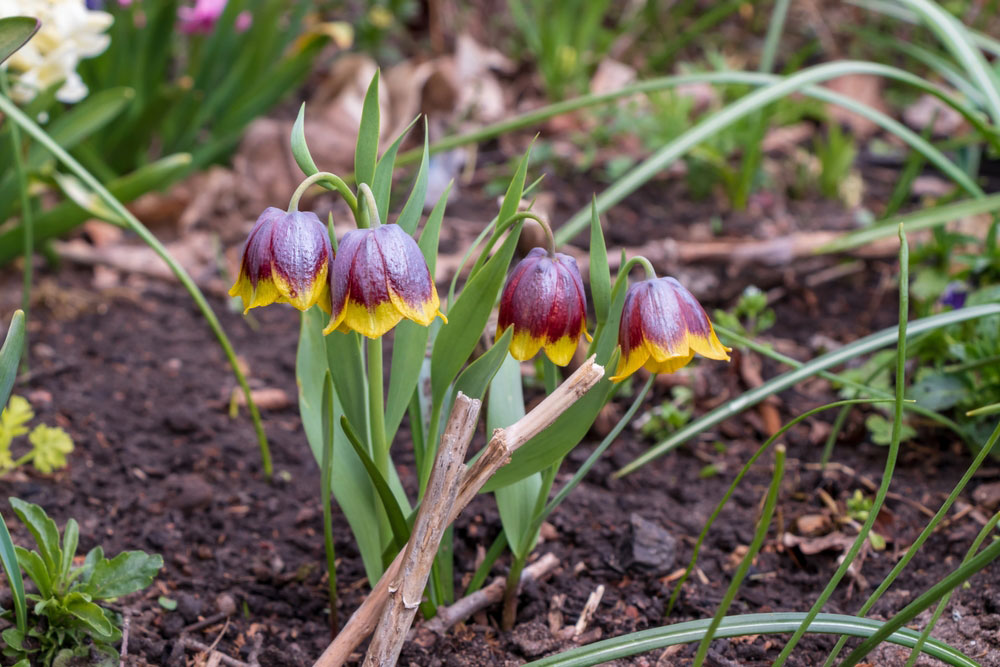
Are they Toxic?
The toxicity levels of fritillaria vary depending on the species. For example, while the Crown Imperial (Fritillaria Imperialis) plant is reported to be so toxic, it can lead to cardiac issues. In contrast, others are reported to cause contact dermatitis from the juice of the bulbs. Therefore, it is best to regard all fritillaria species as toxic to children and pets and seek medical advice if they are ingested.
Dividing and Transplanting
Fritillaria clumps grow larger every year, producing bigger and showier blooms. But they will suffer if allowed to get overcrowded. Lifting and diving the bulbs every few years will keep your fritillarias happy and healthy.
Dig up the bulbs in the fall when they are dormant. Separate the bulbs and replant them in similar growing conditions.
Deadheading and Pruning
Fritillaria does not require pruning but does benefit from deadheading the faded blooms. Let the foliage grow until it dies off on its own, as the foliage harnesses energy from the sun to manufacture and store energy in the bulbs.
Cutting back the foliage before it dies off will prevent your fritillaria bulbs from blooming the following year.
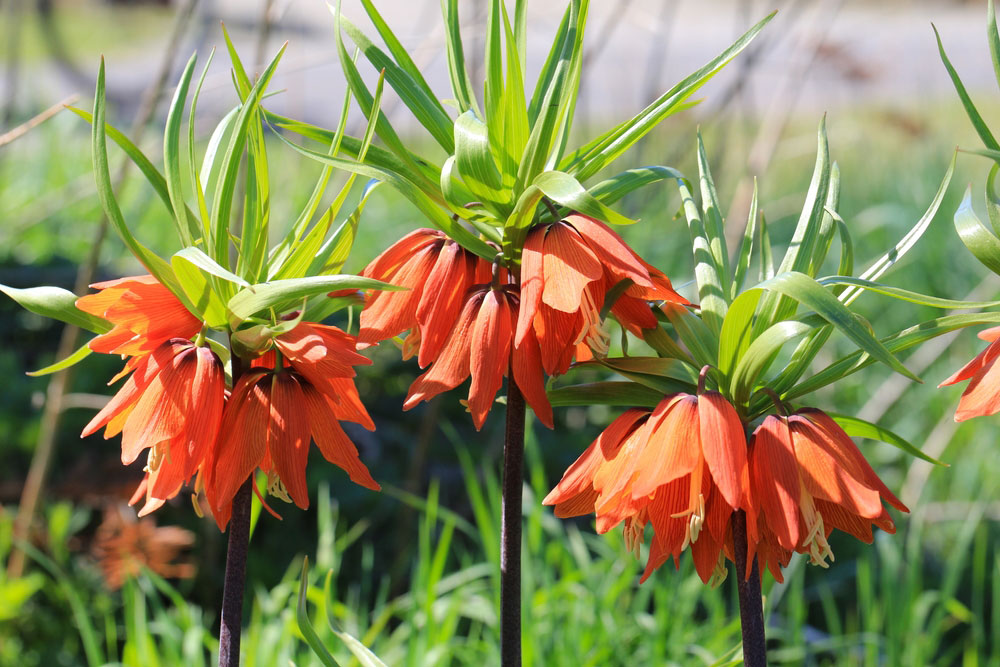
FAQs
Do fritillaria bulbs multiply?
Fritillaria bulbs produce offsets. Offsets are tiny bulbs growing from the sides of the bulb. As the offsets grow, they will produce new flowers, too. However, it may take two to three years for your fritillaria plants to produce offsets large enough to produce blooms.
Does fritillaria come back every year?
Fritillarias are perennial bulbs that produce new blooms and foliage every year. However, they do need cold exposure in the winter to initiate blooming. If the temperature in your area stays above 45 degrees all winter, your fritillaria may produce foliage and fail to bloom, or it may die out altogether.
Does fritillaria self-seed?
Some varieties of fritillaria, such as Snake’s Head (Fritillaria meleagris), will self-seed freely if they are allowed to go to seed in the garden.





